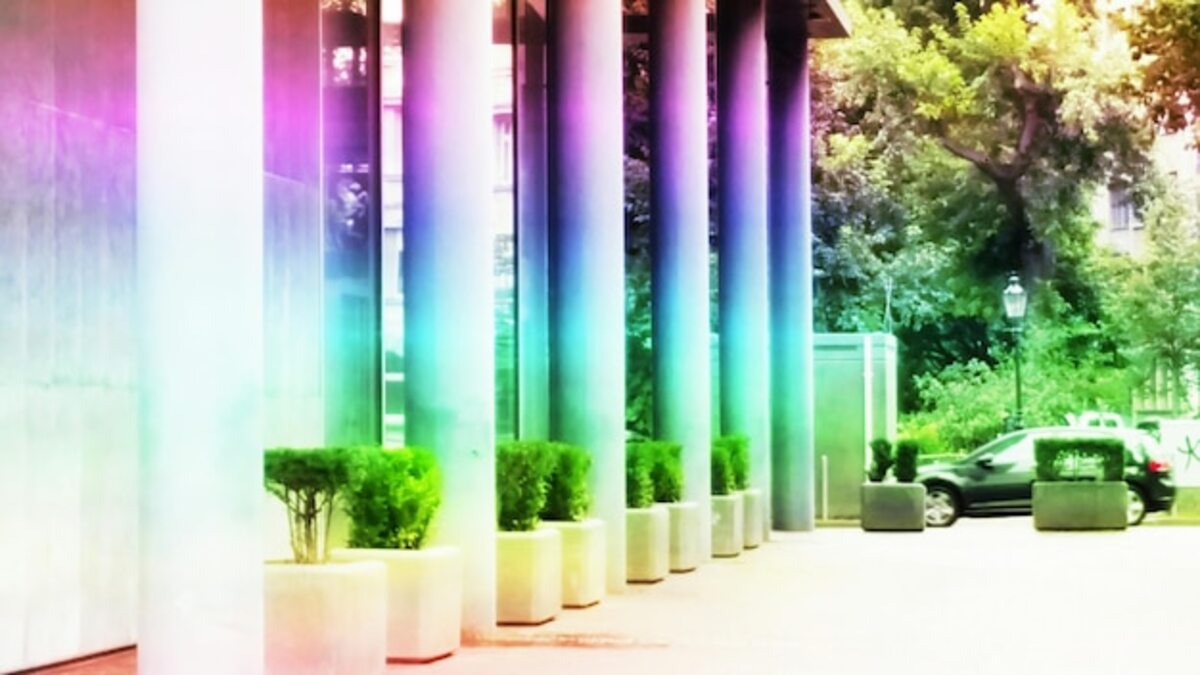Urban Spaces: Cultivating Well-Being Through Conscious Design

Urban spaces: Cultivating well-being through conscious design
Accelerated urbanization has transformed our cities into vibrant yet challenging environments. In this article, we will explore how thoughtful design of urban spaces can enhance our quality of life and promote community well-being. From parks to public squares, every corner has the potential to become a refuge that nurtures mental and physical health. Join me in discovering how the integration of nature, sustainability, and art in our urban environments can transform our daily experience.
Accelerated urbanization has led to the creation of vibrant cities, full of life and opportunities. However, this growth has also brought significant challenges such as increased stress, congestion, and social disconnection. In this context, the conscious design of our urban spaces emerges as a key solution. By integrating elements that promote social interaction and individual well-being, such as accessible green areas and welcoming public squares, we can transform these environments into havens that support both mental and physical health. This approach aims not only to beautify cities but to create places where people feel connected and supported.
The inclusion of nature in urban spaces is essential for improving our quality of life. Studies have shown that natural environments have a positive impact on our emotional and physical state; from reducing anxiety levels to encouraging healthy habits. By incorporating parks, vertical gardens, or even small community gardens in our cities, a balance between the urban and the natural is created that benefits all its inhabitants. Furthermore, by considering sustainability in urban design—using recyclable materials or promoting renewable energy—we not only take care of our environment but also ensure a healthier future for the next generations.
Finally, art plays a crucial role in the transformation of our urban spaces. Colorful murals, interactive sculptures, and cultural events can turn any square or alley into a vibrant focal point that invites people to gather and enjoy public space. These artistic interventions not only beautify the environment but also generate a sense of belonging and community pride. By fostering a participatory culture where citizens can express their creativity and local identity, we contribute to building more cohesive and resilient communities. In this way, every corner can become a place where collective and personal well-being flourishes.
The importance of urban design for mental health
The relationship between urban design and mental health is increasingly recognized in the field of urbanism and city planning. Well-designed spaces that promote social interaction, access to nature, and an aesthetically pleasing environment can have a significantly positive impact on the emotional well-being of residents. Creating accessible parks, recreational areas, and pedestrian pathways not only promotes physical activity but also facilitates casual encounters between neighbors, thereby strengthening the social fabric and reducing feelings of loneliness and isolation.
Additionally, the conscious design of urban spaces can contribute to the reduction of stress and anxiety. Elements such as urban vegetation, water features, and proper lighting can create relaxing environments that invite people to disconnect from the daily hustle. By integrating these natural elements into cities, residents are provided with opportunities to enjoy moments of calm and reflection. Therefore, considering how our urban environments are planned and designed is essential not only for creating more livable communities but also for fostering better mental health among their inhabitants.
2. Green spaces: the lungs of the cities
Green spaces in urban environments are essential for the well-being of their inhabitants, acting as true lungs that purify the air and provide a breath of fresh air amidst the daily hustle. These places not only improve air quality by absorbing pollutants and releasing oxygen but also promote biodiversity, providing habitats for various species of flora and fauna. In a world where urbanization is advancing rapidly, conserving and creating green areas becomes a priority to ensure ecological balance and a healthy environment.
In addition to their environmental benefits, green spaces play a crucial role in the mental and emotional health of individuals. Studies have shown that spending time in nature can reduce levels of stress, anxiety, and depression. Parks, community gardens, and green rooftops become refuges where citizens can disconnect from the city bustle, socialize with others, or simply enjoy outdoor activities. The conscious integration of these spaces not only beautifies our cities but also promotes a more active life connected to the natural environment.
3. Inclusive design: creating spaces for everyone
Inclusive design is an essential approach in creating urban spaces that promote coexistence and the well-being of all people, regardless of their physical abilities, age, or cultural backgrounds. When thinking about the design of a space, it is crucial to consider how each element can be accessible and functional for all users. This involves not only the implementation of ramps and handrails but also attention to aspects such as adaptable urban furniture, clear signage, and recreational areas that encourage the participation of diverse groups. A well-designed environment can help break down physical and social barriers, promoting greater community integration.
Furthermore, inclusive design goes beyond meeting basic regulations; it is about creating enriching experiences for all citizens. Spaces such as parks, plazas, and public buildings must be conceived with empathy, ensuring that every person feels welcome and valued. For example, including quiet areas for those seeking a break from urban noise or interactive activities that invite participation regardless of individual abilities are just some ways to achieve this goal. By cultivating these inclusive environments, not only individual well-being is promoted, but also a collective sense of belonging that strengthens the community as a whole.
4. The role of public art in urban revitalization
Public art plays a fundamental role in urban revitalization, as it transforms desolate spaces into vibrant and welcoming environments. Artistic interventions, such as murals, sculptures, and interactive installations, not only beautify the urban landscape but also foster a sense of belonging among residents. By incorporating art into urban planning, meeting points can be created that invite the community to interact and enjoy the collaborative environment. This push towards creativity can be a catalyst for the social and economic development of the affected areas.
Moreover, public art has the power to tell local stories and reflect the cultural identity of a community. Through works that represent traditions, struggles, or collective aspirations, a dialogue is established between the past and the present that helps weave the narrative of each neighborhood. These artistic expressions not only provide an opportunity to celebrate cultural diversity but also contribute to raising awareness about relevant social issues. In this sense, art becomes a powerful tool to inspire positive change and foster a deeper commitment to the urban spaces where we live.
5. Sustainable mobility: connecting communities
Sustainable Mobility: Connecting Communities Sustainable mobility is an essential pillar in the design of urban spaces that seek to cultivate the well-being of their inhabitants. By prioritizing eco-friendly transportation methods, such as bicycles, walking, and efficient public transport systems, cities can reduce traffic congestion and air pollution. The creation of adequate infrastructures, such as safe bike lanes and accessible pedestrian networks, not only encourages healthy habits among citizens but also promotes a deeper connection between communities. Well-designed spaces that integrate these modes of transportation contribute to strengthening social cohesion and improving urban quality of life.
Additionally, sustainable mobility boosts the local economy by facilitating access to nearby shops and services. By designing environments where people can move easily without relying on cars, opportunities are created for small businesses and local entrepreneurs. This creates a positive cycle where communities benefit both economically and socially. In this way, by integrating sustainable practices into urban planning, not only cleaner and healthier cities are built, but also resilient communities that value collective well-being over individualism.
Finally, promoting a culture of sustainable mobility also means educating and engaging citizens in the transformation of their urban environment. Community programs that encourage car-sharing or events that celebrate active transportation can be powerful tools to raise awareness about the importance of choosing sustainable options. When people feel actively involved in these processes of change, they are more likely to adopt lifestyles that benefit not only their personal health but also the overall well-being of the urban environment. In this sense, connecting communities through responsible mobility becomes a crucial step towards a more balanced and harmonious future in our urban spaces.
6. The influence of colors and materials on well-being
The colors and materials used in urban space design play a crucial role in creating environments that promote well-being. Soft and natural colors, such as greens, blues, and earth tones, evoke feelings of calm and connection to nature. On the other hand, more vibrant colors can stimulate energy and creativity. When considering the color palette of a space, it is essential to understand how these nuances affect our emotional state and social interactions. A well-designed environment not only appeals to aesthetics but also seeks to foster a positive emotional response in its inhabitants.
In addition to colors, the materials used in construction and decoration also significantly influence our perception of space. Natural materials such as wood, stone, and cotton provide a sense of warmth and comfort that contrasts with the cold surfaces of metal or plastic. The conscious choice of these elements can help create a cozy atmosphere that invites rest and social interaction. In this sense, integrating diverse textures not only elevates the design visually but also enhances our physical experience when interacting with the environment, thereby promoting a healthier and more balanced urban life.
7. Meeting spaces: fostering social cohesion
Meeting spaces are essential in urban design, as they act as catalysts for social cohesion. By integrating common areas such as squares, parks, and outdoor markets, interaction among citizens is encouraged, allowing diverse communities to share experiences and build meaningful relationships. These spaces should be accessible and welcoming to everyone, regardless of age or cultural background, thus promoting a sense of belonging and mutual respect. The inclusion of elements such as resting areas, recreational spaces, and community events can transform these places into true social hubs where people feel motivated to participate and collaborate.
Moreover, the conscious design of public spaces can positively influence the mental and emotional health of individuals. A well-planned environment not only provides opportunities for social interaction but also offers a respite from the fast pace of urban life. Green spaces with abundant vegetation can provide a natural refuge that invites relaxation and contemplation. Cultural or artistic activities held in these environments contribute to enriching community life and foster a strong collective identity. In this way, meeting spaces not only serve for recreation; they are essential for strengthening the social fabric and promoting a more integrated and resilient community.
8. Technology and nature: a necessary symbiosis
The integration of technology and nature in urban spaces is not just a trend but a necessity to cultivate the well-being of its inhabitants. Accelerated urbanization has led to the creation of environments that, while functional, often neglect contact with the natural world. However, by incorporating technological elements that promote sustainability, such as automated irrigation systems and air quality sensors, the quality of life in cities can be significantly improved. This symbiosis allows for the creation of healthier and more resilient spaces, where citizens can fully enjoy the urban environment without sacrificing their connection to nature.
Moreover, this fusion of technology and nature opens new opportunities to foster a more conscious and sustainable lifestyle. For example, vertical gardens and green roofs not only beautify urban buildings but also act as natural temperature regulators, thereby improving climate comfort within the properties. At the same time, mobile applications that inform about local flora or promote ecological routes allow people to rediscover their immediate surroundings. This creates a virtuous cycle where both technology and natural ecosystems feed off each other to promote holistic well-being in urban communities.
9. Successful cases: cities that have bet on conscious design
Cities that have embraced conscious design are becoming models for other urban areas around the world. A clear example is Copenhagen, where urban planning prioritizes sustainability and the well-being of its inhabitants. The implementation of green spaces, bike lanes, and pedestrian zones has transformed the way citizens interact with their environment. Furthermore, the city has fostered a culture of active mobility that not only improves air quality but also promotes a healthy and community-oriented lifestyle, allowing residents to enjoy a more pleasant and friendly environment.
Another notable case is that of Melbourne, recognized for its focus on creating "cities for people." Through innovative projects like "superblocks," where vehicular traffic is restricted to create safe and accessible areas for pedestrians and cyclists, public spaces have been revitalized and a sense of community has been fostered. This urban redesign has contributed to improving the mental and physical health of its residents by providing pleasant places for socializing and enjoying outdoor activities. Thus, Melbourne stands as a global reference in conscious design, demonstrating that urban planning decisions can have a profound impact on collective well-being.



